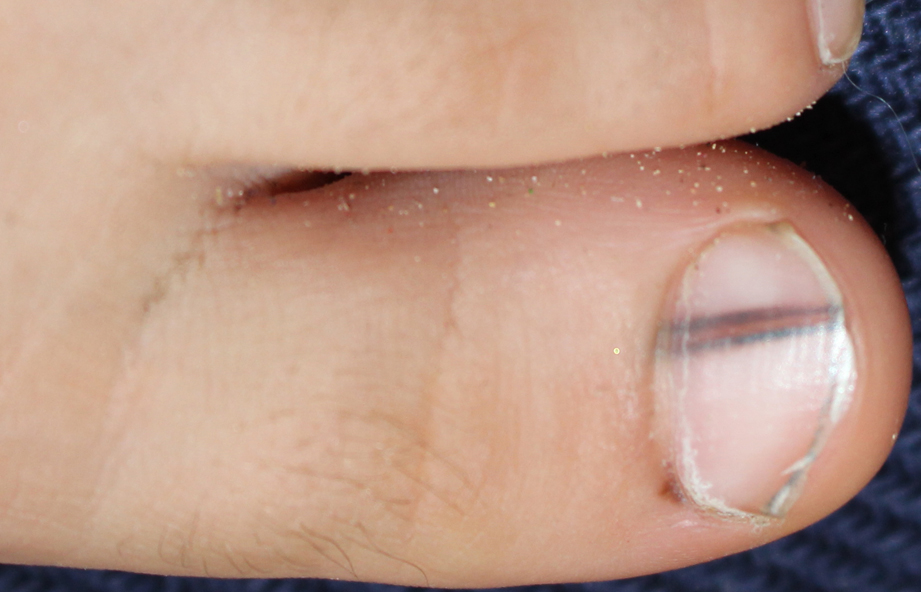Longitudinal melanonichia in the child.

Downloads
DOI:
https://doi.org/10.26326/2281-9649.28.2.1850How to Cite
Abstract
Melanocytes of the nail matrix (NM) do not produce melanin under normal conditions. Longitudinal melanonichia (LM) may be due to melanocytic hyperfunction, benign lentigo, melanocytic nevus of the matrix and melanoma. In the epidermis of the NM, melanocytes are also found above the basement membrane making it more difficult the differential diagnosis between nevus and melanoma. In nevus melanonychia of the child the bands are 3.5 times wider than in the adult, they can present chromatic variations, they can be associated with nail dystrophy and with Hutchinson’s sign (2). In the literature there are 11 cases of unilateral longitudinal band melanoma in the child, in no case with metastases, all in situ and all questionable. In the child the nail biopsy is difficult to perform and must be performed in the LM with the same criteria of acquired and congenital melanocytic nevi in pediatric age (1).
